Jordanian Food Dishes: Basic Overview
Common Ingredients
Common Cooking Methods
Courses
Meals
Key Taste
Eating Etiquette
Meal Presentation
Culinary Festivals
Influence and Fusion
Popular Types of Jordanian Dishes
-
Grilled and barbecued dishes
Jordanian cuisine is renowned for its grilled and barbecued dishes, which often feature lamb as the primary meat.
The tradition of grilling and barbecuing also reflects the communal aspect of Jordanian meals, especially at gatherings and celebrations.
-
Rice dishes
In Jordanian cuisine, rice dishes are a staple, embodying the essence of the region’s culinary traditions.
These dishes are characterized by their aromatic spices and rich flavors, often combined with meats such as lamb or chicken, and sometimes even adorned with nuts and raisins.
The preparation of rice dishes is an art form in Jordan, making them a central component of both everyday meals and festive occasions.
-
Rolls
Jordanian rolls, including stuffed grape leaves and cabbage rolls, are delicately prepared with a mixture of spiced meats, rice, and minced vegetables, all wrapped in leaves.
These rolls are then cooked to perfection, creating a harmonious blend of flavors and textures.
-
Salads
Salads in Jordanian cuisine are vibrant and refreshing, featuring a generous use of fresh herbs, vegetables, and a dressing of lemon juice and olive oil.
These salads are not just side dishes but integral components of the meal, offering a burst of freshness and a counterbalance to the more savory dishes.
-
Vegetarian dishes
Vegetarian dishes in Jordanian cuisine are diverse and flavorful, making extensive use of legumes, vegetables, and grains.
These dishes highlight the versatility of plant-based ingredients when combined with the region’s rich array of spices and herbs.
-
Bread and doughs
Bread and dough-based dishes are fundamental in Jordanian cuisine, serving as the cornerstone of many meals.
From the flatbreads used to scoop up dips and salads to the doughs stuffed with meats, cheeses, or za’atar for making Manakish, these items are versatile and ever-present.
Jordanian dishes are delicacies that have long been popular in Jordan, a country in the Levant and the Middle East. Neighboring countries, especially Syria, Lebanon, and Palestine, strongly influence Jordanian cuisine.
The culinary arts in Jordan have been enriched by centuries of Ottoman rule and the nomadic lifestyle of the Bedouin people, blending to create a unique culinary identity.
Over centuries of social and political change, these influences have blended to shape the identity of Jordanian fare.
Jordanians use many cooking methods, such as roasting, grilling, and baking. Halal meat, compatible with Islamic dietary laws, is the main ingredient used in many types of foods, from main dishes to snacks and street foods.
Olive oil, yogurt, and spices are other essential ingredients contributing to the famous richness and fragrance of local dishes.
Jordanian desserts are also creamy and seasoned with spices. To cut through the rich flavors, food staples like rice and chewy flatbreads are extensively used. In terms of beverages, tea and Arabic or Turkish coffee are suitable choices.
A central concept in Jordanian cuisine is meze (or mezze), a selection of small plates that showcase the specialty of these West Asian dishes. Meze items are served as appetizers at the beginning of a main meal, such as dips and salads.
For each Jordanian dish, I will delve into its origin, alternative names, main ingredients, cooking methods, possible variations, suitable side dishes, countries where it is also popular, and extra information like appearances and flavors.
Next, I will introduce you to the defining features of Jordan’s food culture, especially the popular types of foods in the country. Then, spend some time to check out the pairings of dishes and beverages in Jordan.
22 Popular Jordanian Dishes with Filters
Remember to use the helpful filter system to view these Jordanian dishes in alphabetical order, tastes, ingredients, dish types, cooking techniques, and global popularity.
Additionally, here some some culinary styles of Jordan, revolving around the most popular, national, traditional, and street food options:
Mansaf
- National
- Traditional
Mansaf is the national dish of Jordan and is usually served on all special occasions, like Eid al-Fitr (an important Islamic holiday), Christmas, weddings, or birthdays.
Although rooted in the country’s pastoral traditions, the modern version of mansaf only emerged in the 1920s and has gone through many transformations since then.
Nowadays, mansaf is prepared by cooking chunks of lamb or goat meat in a broth of jameed (a type of yogurt made from goat’s milk). The meat is then served on a bed of seasoned rice with pine nuts, almonds, and Arabic flatbread (locally known as khubz).
While beef and chicken are also suitable sources of protein for mansaf, lamb and goat meat are more widely used. Bulgur (cracked and parboiled wheat) is sometimes used in place of rice.
Although enjoying the yogurt-cooked lamb and rice dish with spoons and plates is acceptable, the traditional way to eat mansaf is with your right hand while placing the other hand behind the back.
Use the hand to form the rice into balls to savor with the meat. Blowing on the rice is a taboo.
In the past, the leaders of conflicting Jordanian tribes often served mansaf to each other when making peace or truces.
Today, this combo of fragrant rice and tender, flavorful meat is a familiar restaurant fare. Outside Jordan, mansaf is also well-known in Levantine countries and Saudi Arabia.
Hummus
- Traditional
Hummus, literally “chickpea,” is a classic savory dish or dip with a long history in Jordan. Its main ingredients are mashed chickpeas, tahini (sesame paste), garlic, lemon juice, and other flavorings like olive oil and parsley.
Hummus is widely enjoyed in the Middle East as a meze dish. With its nutty and earthy flavors, hummus pairs well with feta cheese, labneh (strained yogurt), olives, flatbreads, or roasted vegetables.
Like their neighbors, Jordanians add various spices to the chickpea-based dips to create different variations, with paprika as a favorite choice.
When topped with meat or pine nuts, hummus is also an ideal light meal for breakfast and other meals in local cuisine.
Falafel
- Street Food
- Traditional
Falafel is a time-honored Jordanian appetizer and street food of Egyptian origin. People prepare falafel by blending ground chickpeas and fava beans with such flavorings as onions, garlic, parsley, and spices. The mixture is then shaped into patties or balls and deep-fried until crispy.
This type of vegan fritter is a common sight at meze tables and street food stalls in Jordan and other Middle Eastern nations. The deep-fried patties or balls are excellent for accompanying salads, hot sauce, or tahini-based dips.
Flatbread or pita bread (a type of round Levantine flatbread with an interior pocket) stuffed with falafel, vegetables, and garnishes is a convenient fast food item.
Kebab
- Street Food
- Traditional
Kebab, or grilled meat on skewers, is a timeless street food in Jordan as well as other Middle Eastern countries. Locals usually prepare this delicacy from lamb marinated in strong spices. Jordanians usually add cumin, chopped parsley, and coriander to impart a unique flavor.
Shish kebab (made with cubes of meat) and kofta kebab (a meatball-like dish made with ground meat) are the two most popular varieties in Jordan. Common sides for the grilled meat are rice and salads. Some people stuffed kofta kebab into flatbreads to create ara’yes, a type of sandwich.
Shawarma
- Street Food
Shawarma is a traditional Jordanian street food with roots in Ottoman cuisine. Its main ingredient is seasoned and grilled lamb, beef, or chicken.
It is easy to come across shawarma stalls in which vendors roast an inverted cone-like stack of thin meat slices on a slowly rotating spit.
When serving shawarma, the vendors will shave the meat into thin slices and stuff them into pita bread along with vegetables and tahini or garlic sauce. Another way is to put the meat and garnish onto a wrapped bread and roll it up.
Shawarma is exceptionally flexible in terms of variations, with many street cooks adding their own toppings or condiments to the stuffed bread dish.
Knafeh
- Street Food
- Traditional
Knafeh is an age-old Jordanian pastry dessert with kataifi (spun pastry) as the crust and sweet cheese or cream as the filling.
After being baked, knafeh acquires a crispy exterior and a creamy, decadent interior. The spun pastry dessert is then drizzled with scented syrup and garnished with pistachios.
There is some debate about the origin of knafeh, with Fatimid Egypt as the most likely birthplace of the decadent dessert. A serving of energy-rich knafeh is extremely popular during the holy month of Ramadan when people need an energy boost after a long day of fasting.
Outside Jordan, knafeh is also well-liked throughout the Arab world and Turkey. The spun pastry is often cut into slices and served with tea or Arabic coffee while still hot.
Tabbouleh
- Traditional
Tabbouleh, alternatively spelled as tabbouli or taboulah, is a timeless salad and meze dish in Jordanian cuisine. Tabbouleh is a combination of parsley and cooked bulgur, along with extra ingredients like tomatoes, mint leaves, onions, lemon juice, and olive oil.
Originating in Lebanon and Syria, tabbouleh is now a must-have appetizer and side dish in many Middle Eastern countries, especially those in the Levant. The Jordanian version typically uses a higher ratio of parsley, with garlic or lettuce as possible add-ins.
Fattoush
- Traditional
Fattoush is a time-honored Jordanian salad with fried or toasted flatbread. Multiple types of vegetables are suitable for this appetizer and side dish, such as lettuce, radishes, cucumbers, and tomatoes. Mint leaves, parsley, sumac, lemon juice, and olive oil are other necessary ingredients.
The preparation of fattoush involves tossing the vegetables with the dressing before adding bite-sized pieces of bread to the salad. The mix of zesty and savory flavors that fattoush delivers is extremely refreshing.
Baba Ghanoush
- Traditional
Baba ghanoush is a classic Jordanian dip and appetizer with an intriguing name: “Baba ghanoush” is literally “pampered father,” suggesting a humorous backstory to its creation.
Baba ghanoush consists of broiled and pureed eggplant, olive oil, tahini, lemon juice, and various spices.
The grilled eggplants and tahini bestow a creamy flavor with some smoky notes, while lemon juice complements the taste with a refreshing tanginess. Other ingredients like pomegranate syrup or tomatoes sometimes join the mix.
The eggplant-based dip is extremely smooth and creamy. Flatbreads, salads, and vegetables go perfectly with the dip. Mutabal is a more simple version of baba ghanoush that doesn’t contain tahini and extra condiments.
Kibbeh
- Traditional
Kibbeh, or kubba, is a celebrated dish with a long tradition in Jordan. Locals make kibbeh by shaping a paste of ground meat (like lamb), bulgur, and spices (like cinnamon and ground coriander) into croquette-like patties before deep-frying, baking, grilling, or steaming them.
Sometimes, kibbeh is even served raw in a variation known as kibbeh nayyeh. Both the cooked and uncooked versions are well-known meze dishes in Jordan and other Levantine countries. The meat and bulgur patty is even the national dish of Syria and Lebanon.
Kibbeh boasts a wonderful contrast between the crispy shell and the succulent, juicy filling. Ideal dishes to serve with the croquette-like dish include flatbread, hummus, tahini sauce, and salads like tabbouleh.
Maqluba
- Traditional
Maqluba, or maqlooba, is a timeless Jordanian rice dish with a tower-like shape. The name means “upside-down,” referring to the unique way of serving maqluba.
Locals cook all the ingredients of maqluba in a single pot, with fried vegetables at the bottom, followed by meat and rice. Those things are then cooked in a rich broth. People serve the rice dish by flipping the pot upside down so that the content is arranged on the plate in the opposite order.
Cauliflower, eggplants, and potatoes are common choices of vegetables for the upside-down rice dish, while protein usually comes from lamb or chicken. Chopped parsley and pine nuts are classic garnishes, while some versions include toasted vermicelli noodles.
Maqluba has been popular in the Levant since the 13th century. Its rich and fragrant taste is even better with a side of salad or yogurt.
Musakhan
- Traditional
Musakhan, or muhammar, is a classic Jordanian dish with roots in Palestinian cuisine. Musakhan consists of a flatbread base with spiced and roasted chicken, baked onions, and pinenuts.
The preferred bread is taboon, which is baked in a submerged clay oven called taboon or tannur. To prepare musakhan, taboon bread is dipped in olive oil before being topped with other ingredients.
Musakhan is traditionally accompanied by yogurt sauce. The traditional way to enjoy this bread-based dish is using the right hand, though some restaurants also serve it as a pizza or a wrap.
Manakish
- Street Food
- Traditional
Manakish, also known as man’ousheh, is a signature bread-based dish in Jordanian cuisine. Manakish is a crunchy flatbread topped with cheese, ground meat, and a mixture of olive oil and spices. The flatbread is either enjoyed whole or cut into slices.
Thyme and za’atar (a spice blend of sumac, oregano, toasted sesame seeds, and other spices) are the most popular toppings for manakish in Jordan. Locals usually enjoy the topped flatbread breakfast and lunch. Manakish with mint tea is also a popular meze item in Levantine cuisine.
Warag Aynab
- Traditional
Warag aynab, alternatively spelled as warak enab, is an age-old Jordanian dish made by wrapping grape leaves with spiced meat (like beef or lamb), short-grain rice, and minced vegetables.
The stuffed grape leaves are then cooked in broth, garnished with lemon wedges, and served hot with yogurt.
Hailing from Ottoman cuisine, warag aynab is a favorite item for the main course in Jordan. The stuffed grape leaves are also popular in many countries that were in the former Ottoman Empire, going by the name of sarma in those places.
Malfuf
- Traditional
Malfuf, or malfouf, is a time-honored dish for lunch and dinner in Jordan. A local version of cabbage roll, malfuf is prepared by rolling blanched cabbage leaves around a filling of short-grain rice and spiced minced meat.
Then, the rolls are simmered in a broth seasoned with garlic cloves and lemon juice or pomegranate molasses.
The Jordanian cabbage roll is excellent at pairing with yogurt and flatbreads. People often garnish the dish with lemon wedges. To make malfuf vegetarian, minced meat is omitted or replaced with mushrooms or chickpeas.
Kousa Mahshi
- Traditional
Kousa mahshi, literally “stuffed squash,” is a well-known dish in traditional Jordanian cuisine. This vegetable-based dish of Ottoman origin is prepared by coring a squash and stuffing it with various ingredients before being slow-cooked in a tomato-based broth.
Popular stuffing ingredients for kousa mahshi include rice, minced meat, chopped tomatoes, pine nuts, parsley, and spices. Jordanians typically serve the stuffed squash with yogurt, chicken, or warag aynab.
Zarb
- Exotic
- Traditional
Zarb is a famous Jordanian meat dish created by the Bedouin. This type of Bedouin BBQ involves slowly cooking meat or vegetables in a submerged taboon oven. Lamb, chicken, carrots, eggplants, and zucchini are classic ingredients for zarb.
Nowadays, Jordanians usually use multi-tiered racks to prepare zarb, and they serve Zarb on large communal plates with rice, flatbreads, salads, hummus, and baba ghanoush. Zarb is immensely popular in the desert region in the south and east of the country, especially around the Wadi Rum area.
Zarb is also popular throughout the Middle East under different names, such as quzi, qoozi, or ghoozi. But quzi is usually served with rice and other garnishes, such as nuts and raisins.
Freekeh
- Traditional
Freekeh is a traditional type of cereal in Jordan, prepared by dehydrating, toasting, and cracking green durum wheat. Upon completion, freekeh looks like green bulgur. The nutty, earthy cereal is usually cooked in water like rice and served with savory foods or simmered in broth into a thick porridge.
Jordanians sometimes use freekeh to create a dish called freeket lahma, a combo of boiled freekeh, pine nuts, roasted lamb, and spring peas. Sometimes, people in this Levantine country even use freekeh as a substitute for bulgur in certain dishes, like mansaf.
Qalayet Bandora
- Traditional
Qalayet bandora, or galayet bandora, is a classic and vegetarian Jordanian dish made from tomatoes sautéed in olive oil with garlic and onions.
The tomatoes are cut into small cubes and cooked over low heat in a frying pan until they nearly disintegrate. Some versions add eggs, minced meat, or pine nuts for a heartier flavor.
Qalayet bandora always goes with flatbread or pita bread, which is ideal for dipping into or scooping up the thick stew. Thanks to its simplicity and affordability, the tomato-based stew is a versatile side dish, meze item, and main dish for any meal of the day.
Fasoulya Beyda
- Traditional
Fasoulya beyda, also spelled as fasoolia baida, is a traditional Jordanian stew with white beans and tomatoes as the main ingredient. Depending on the regions, the stew features various other ingredients, such as carrots, onions, celery, lamb, beef, or kidney beans.
Many people in Jordan like to enjoy the creamy and tangy fasoulya beyda with rice. This white bean and tomato sauce stew is widely enjoyed throughout the Middle East and in Greece, where it is known as fasolada.
Ful Medames
- Traditional
Ful medames is an ancestral Jordanian dish made from fava beans. Created in ancient Egypt, ful medames has many versions in the Middle East, with the Jordanian one sharing many similarities with hummus. In this country, people prepare it as a dip.
Ful medames is made by mashing cooked fava beans with tahini, tomatoes, lemon juice, pepper, cumin, and olive oil. A combo of flatbread and ful medames is a light yet filling breakfast dish.
Fatteh
- Traditional
Fatteh is a traditional Jordanian breakfast and dinner dish consisting of crushed flatbread mixed with strained yogurt, cooked chickpeas or hummus, cumin, and olive oil. People often add extra ingredients to the mix, such as pine nuts, carrots, or even lamb shanks and grilled chicken.
Even stale bread is good enough for this delightful breakfast dish, which is also sought-after in Egypt and the Levant. Fatteh is easy to prepare yet full of flavors, demonstrating the appeal of Jordanian food culture.
What Is Jordanian Food Culture?
The following 4 main features form the basis of Jordan’s food culture are explained below:
Make sure not to miss the chance to learn about the great pairings of dishes and beverages in Jordan.
What Jordanian Dishes to Pair with Beverages?
Pairing Jordanian dishes with beverages is a great way to enhance the overall flavors. These are the combos of drinks from Jordan to try with the country’s dishes:
Have you found your favorite dish? Feel free to let me know in the comment section. If you have tried my recommended dishes and want to share your thoughts, be my guest! Before you go, don’t forget to share this list of traditional Jordanian foods with your friends!




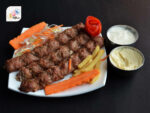
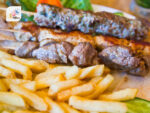
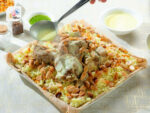
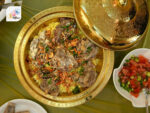
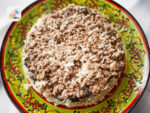
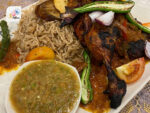
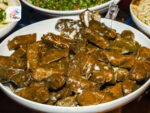
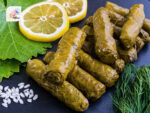
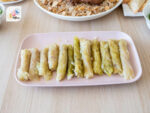
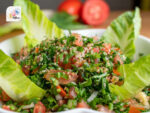
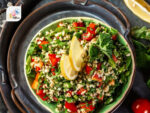
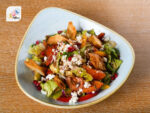
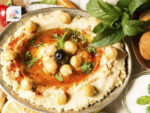
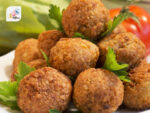
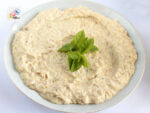
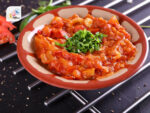
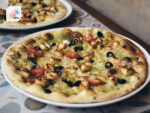
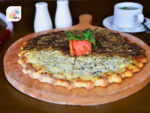
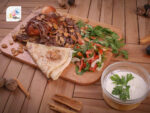
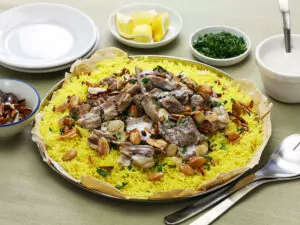
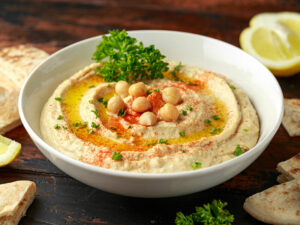
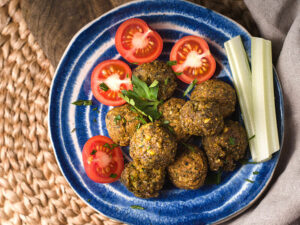
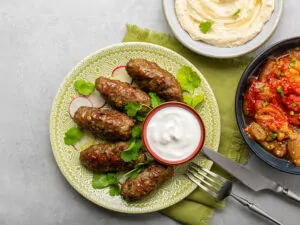
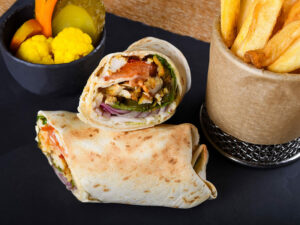
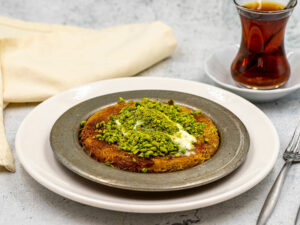
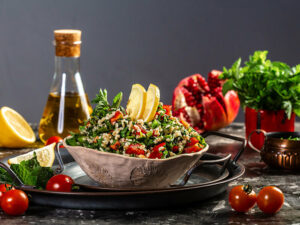
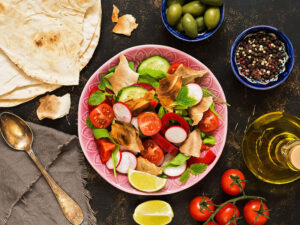
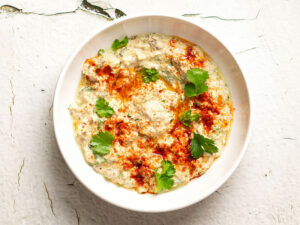
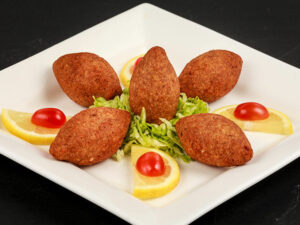
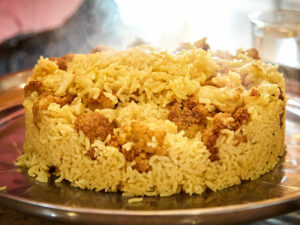
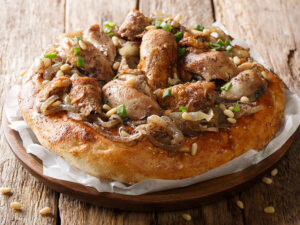
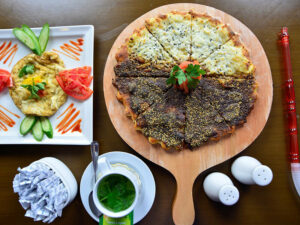
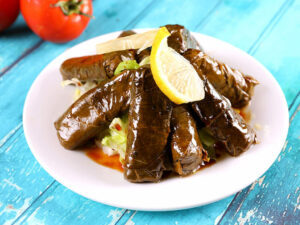
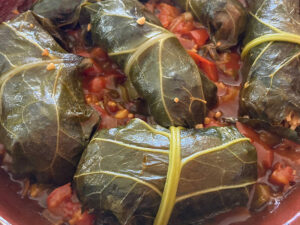
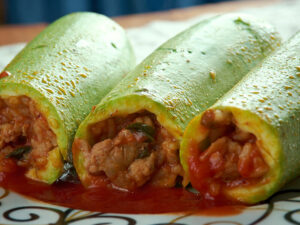
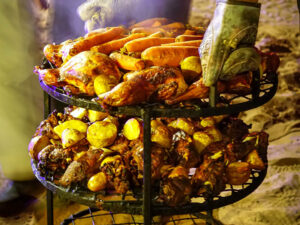
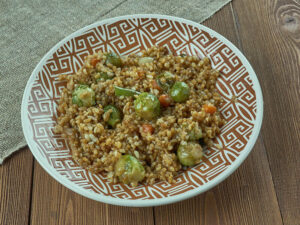
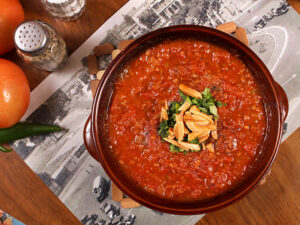
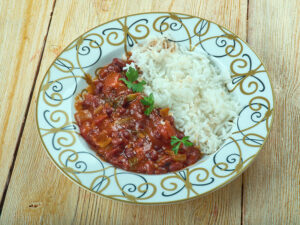
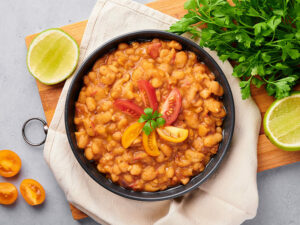
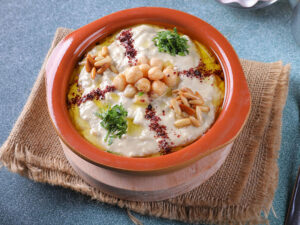
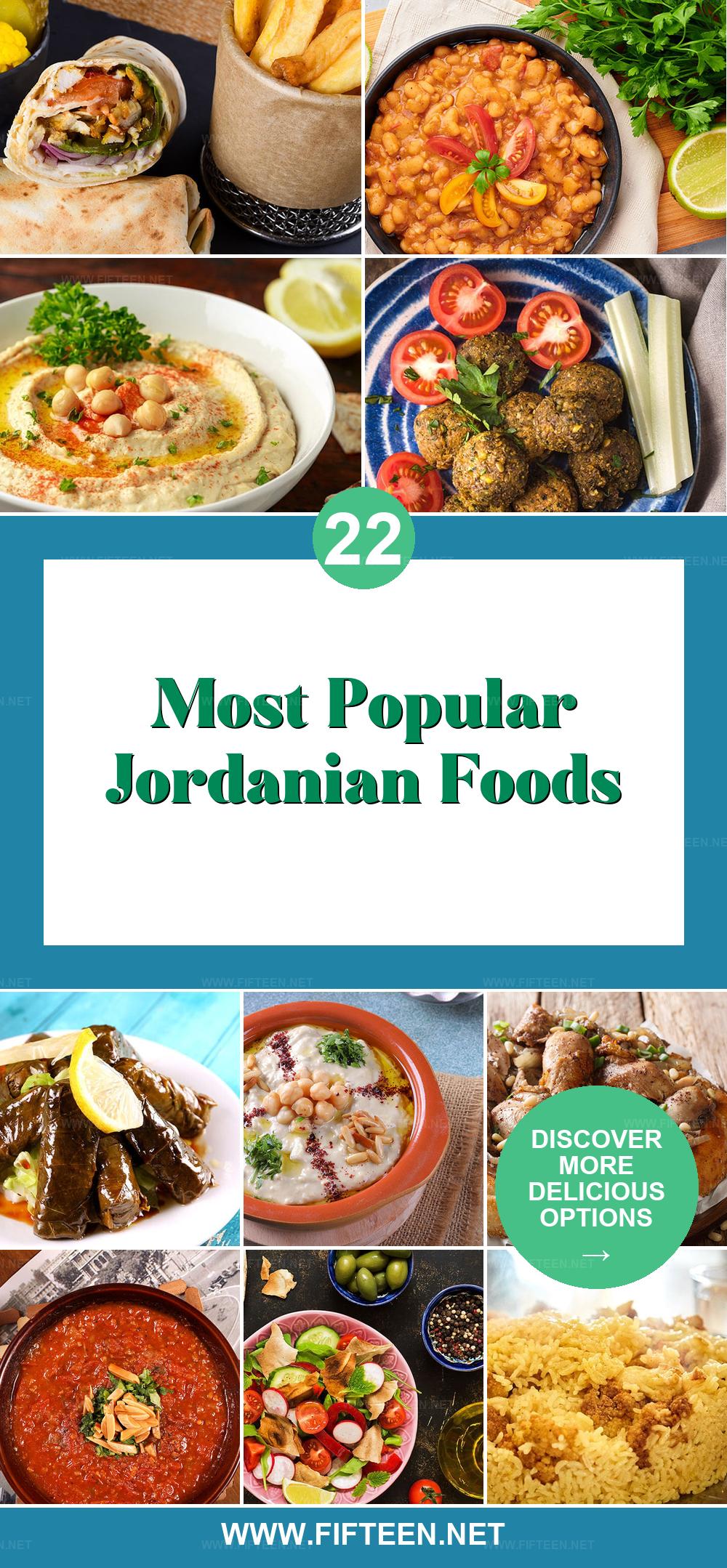
Jamie Scott
Editor in Chief, Senior Content Writer
Expertise
Home Cooking, Meal Planning, Recipe Development, Baking and Pastry, Food Editor, Cooking-video Maker, Western Food Evaluation Expert
Education
Le Cordon Bleu College of Culinary Arts
Local Community College, New York, NY
Jamie Scott is a skilled culinary expert and content creator specializing in Western cuisine. With over 15 years in the culinary field and formal training from Le Cordon Bleu, Paris, Jamie deeply understands how to blend nutrition with delicious flavors. His passion for cooking matches his commitment to making healthy eating accessible and enjoyable.
On Fifteen.net, Jamie brings a fresh perspective to classic dishes and beverages, offering readers insightful recipes, cooking tips, and a fresh view on meal planning that emphasizes taste, health, and simplicity.